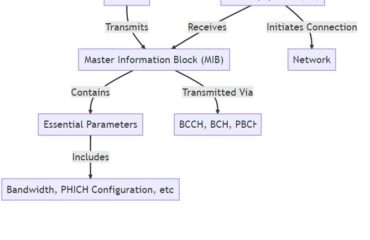A Complete Guide to Predictive
Maintenance and Operation

Machines tend to malfunction, and it can be difficult to tell when they will break down. Fortunately, modern technologies, sensors, and the Internet of Things (IoT) allow companies to predict when a machine or piece of equipment might malfunction or break down completely. This is made possible through predictive maintenance.
Predictive maintenance is used for monitoring equipment and addressing problems that might lead to equipment malfunction in the future. Today’s visionary leaders embrace predictive maintenance to prevent equipment failure and better match productive capacity with market demands.
While predictive maintenance isn’t a novel concept, there is still some confusion about what it entails and how it can benefit an organization. Therefore, we have created this guide that explains the nitty-gritty of predictive maintenance and lists the benefits this technology can provide companies.
What is Predictive Maintenance, and How Does it Work?
Predictive maintenance software employs predictive analytics, IoT sensors, and data science to predict when a piece of equipment might malfunction. The objective is to plan maintenance when it will be most practical and economical, maximizing equipment longevity while preventing equipment degradation. Predictive maintenance systems’ basic architecture typically consists of data collection and storage, condition monitoring, asset health assessment, decision support systems, and a layer for the user interface.
Nondestructive testing techniques, such as detection, acoustic, infrared, sound level metrics, oil analysis, vibrations, and thermal imaging are examples of predictive maintenance techniques. These techniques measure and collect operations and hardware data in real-time with the help of wireless sensor networks. These metrics and machine learning approaches for predictive maintenance are used by businesses to identify equipment weaknesses.
Predictive maintenance technology helps organizations reduce the risk of equipment failure and achieve increased operational performance and efficiency rates by taking action before the machine breaks down. The collection and analysis of data is a key component of predictive maintenance. Furthermore, it is crucial that the data can be gathered and processed quickly. Generally, sensors are used to collect operational data from devices. The technology team can use this data to define particular criteria for upcoming operations to create benchmarks for ideal or peak performance.
The next phase is the analysis of data in real-time. The IT team may compare machine data to the predetermined and approved ranges. When something strays outside that range, signaling a tendency toward breakdown or downtime, warnings go off so the right people can take action.
Pros of Predictive Maintenance
Your business will gain real advantages from specializing in predictive maintenance techniques. Let’s have a look at some of these pros below.
Cost Effectiveness
According to a study carried out by the United States Department of Energy, predictive maintenance is extremely cost-effective. Using predictive maintenance technology can result in considerable monetary benefit by reducing maintenance expenses, decreasing breakdowns, and decreasing downtime. Reactive maintenance is a type of maintenance where repairs are made to parts or machinery only after they have failed, or the facility has degraded.
Interestingly, the majority of businesses structure their maintenance schedule based on need. In other words, they react to faults or breakdowns after they happen, restoring the device’s functionality. As a result, contrasted to proactively changing broken parts, reactive maintenance might be four to five times more expensive.
Companies could save money if they could anticipate and prevent equipment failure. Improved maintenance planning can produce significant savings in asset-intensive businesses. With IoT-based predictive maintenance, you can systematically arrange the best inspection and maintenance program to prevent unanticipated outages and unnecessary work.
Lack of inventory management, poor communication, and productivity losses are some direct consequences when there are no earlier indications of subpar performance. These are the suggestive outcomes that preventive maintenance can help to prevent.
Reduced Downtime
Sudden equipment or hardware failures can result in additional damage to the equipment and linked systems, necessitating costly repairs, the replacements of numerous parts, or perhaps even the breakdown of the entire device. However, predictive maintenance can considerably limit the possibility of collateral damage by identifying problems early.
Downtimes can be prevented or scheduled in advance with little impact on the client, thanks to early involvement and proactive service methods made possible by IoT sensors. In other words, including a data-driven solution into your operational processes allows you to improve the conditions of your equipment, which ultimately reduces equipment failure and directly impacts your bottom line.
More Accurate Asset Data
Predictive maintenance software programs are built to convert sensor data into forecasts of the average time among failures. Access to this information enables service teams to anticipate when to repair and replace worn-out parts rather than continuously scheduling expensive maintenance procedures that degrade the equipment’s performance over time. Additionally, you will be able to gather and evaluate data from numerous sources, including IoT or equipment sensors, to execute diagnostic checks.
For instance, a temperature drop might only indicate a window was opened. On the other hand, a slower elevator might be overloaded. It is frequently challenging to rely solely on a single sensor-based input. This is why it is essential to integrate this input with other findings relevant to the observed asset or property to acquire real insights- and all of this is done effectively by predictive maintenance analytics systems.
Customer Satisfaction
The client can plan their engagement when the appropriate expectations are set concerning the day, duration, and length of intervention. Based on the feedback given, it is feasible to construct a schedule that works for the clients while considering their demands. Thus, employing a data-driven approach like predictive management will boost customer contentment and operational stability altogether.
Increased Productivity
Predictive maintenance reduces the time required for repairs and the frequency of repairs for equipment that experience critical failure. There are fewer malfunctions and significantly better factory conditions, which reduce workplace accidents. All of these elements contribute to greater productivity. Maintenance managers no longer need to spend valuable time gathering sensor data individually owing to predictive maintenance software that uses IoT to interpret it. Designers and technicians can also be used more effectively, and crucial work can be arranged as part of routine tasks with minimal emergency interruptions.
How can Predictive Maintenance be implemented today?
Predictive maintenance is now a realistic option for more modern businesses, just as other aspects of digital transformation. Companies are progressively using automated predictive maintenance in their processes and machinery by leveraging AI predictive maintenance techniques and IoT.
Predictive maintenance programs may be trained using AI to recognize defects and trends in equipment visually. Computer-aided design directions can be included without the need for extra system programming and algorithms can be developed to manage supply chain operations. Automatic detection of abnormalities lowers unexpected downtime and expenditures by quickly estimating when machinery will break down.
Predictive maintenance is now more feasible than it once was due to two changes. First, corporations can monitor variables like pressure and temperature of industrial processes in real-time due to the extensive use of sensor technology. The other difference is that most of the time, in addition to the exponential growth in data quantity, all new information is typically being uploaded to the cloud,making it much more accessible.
These elements collectively have a significant organizational impact. Prior to predictive maintenance, diagnosing when a machine malfunctioned or failed necessitated the evaluation of a qualified expert who had experience dealing with the machinery and its working principles. With the quantity of data available today and the new machine learning and AI approaches, it is now possible to detect trends in all that data, including tiny details humans would have missed.
One person can now keep an eye on dozens of machines because of the enhanced capability of IoT sensor technology. Additionally, businesses may have collected years’ worth of historical data, allowing for stronger trend analysis and detecting patterns that individuals might overlook.
Final Verdict
Predictive maintenance is an approach that offers significant benefits. It is excellent for industries because it allows them to reduce downtime and manage demand more efficiently. Although there may be large up-front expenditures, this is an excellent long-term option that can offer a high return on investment through cost reductions and enhanced machine performance.
Using predictive maintenance will make your company stand out from the crowd and enable you to offer your clients additional value. The level of overall customer support that a business provides and how well it safeguards its assets are two ways to measure its value. In this way, predictive maintenance can help you demonstrate to clients how to increase equipment longevity and boost the effectiveness of maintenance procedures. If you wish to avoid delays that result from equipment malfunctions and downtime, consider using predictive maintenance.



